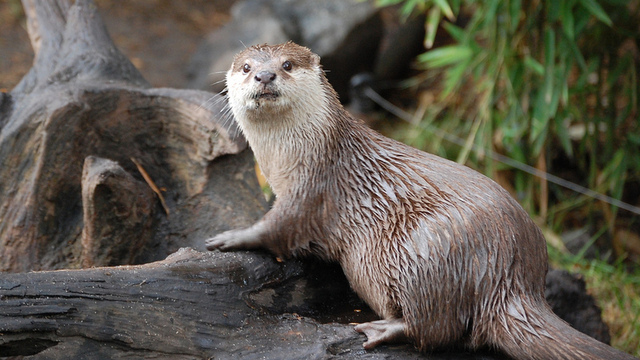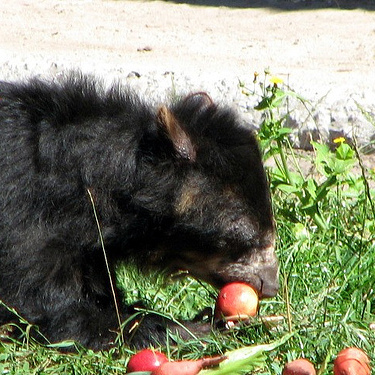
They say you are what you eat, but do you eat what you eat because of what you are? That's a question asked by a paper from a group at the Monell Chemical Senses Center, published this week in PNAS. We've covered previous work from Monell, who's looked at relationships between taste receptors and carnivorousness: first off a paper that showed that cats lost the ability to taste sweet, and later a more extensive study looking at a number of different carnivores and discovered that, like us, red pandas can also taste aspartame.
The latest paper takes the widest-ranging look across a number of species to answer two questions. Is the loss of sweet taste receptors confined to animals that are exclusively carnivorous? Could different feeding behavior in carnivores result in a lack of other taste receptors?
We taste thanks to a number of specialized receptors present on the surface of our tongues. Most of these receptors belong to the superfamily of receptors called G protein-coupled receptors (GPCRs). GPCRs are found throughout our tissues; some detect neurotransmitters, some detect light (the photoreceptors in our eyes), and many detect different smells.
Humans can detect five distinct tastes: sweet, umami, bitter, sour, and salty. Of that list, sweet, umami, and bitter are sensed via GPCRs. Sweet is sensed by a complex (a "heterodimer") formed by two receptors called Tas1r2 and Tas1r3. Umami is tasted through a heterodimer of Tas1r1 and Tas1r3. Bitter is registered through a family of receptors called Tas2r that are less similar.
In the 2005 study mentioned above, the group from Monell discovered that cats have a mutation in the Tas1r2 gene that renders it inactive, or "pseudogenized" (literally turned into a pseudo-gene). They suggested that this was an important contribution in the evolution of cats as obligate carnivores. As their diet became predominantly carnivorous there was no reason to be able to taste sweet stuff, so there was no evolutionary pressure to keep a working Tas1r2 receptor.
Is this a common feature of carnivores? The researchers first sequenced the complete gene sequence for Tas1r2 from 12 species across the order Carnivora. They found that five species had functional Tas1r2 genes: the aardwolf, Canadian otter, spectacled bear, raccoon, and red wolf. In the remaining seven species (Asian small-clawed otter, banded linsang, California sea lion, fossa, Pacific harbor seal, spotted hyena, southern fur seal) all had a non-functional Tas1r2, although the responsible mutations were different in each species. All seven species with pseudogenized Tas1r2, like the cat, only eat meat.
Next, they conducted an evolutionary analysis of Tas1r2 among Carnivora, using the 12 species listed above, as well as previously sequenced species with a pseudogenized Tas1r2 gene (the domestic cat) and five species with a functional gene (the dog, Canadian otter, ferret, giant panda, red panda, yellow mongoose, and red wolf).
They determined that Tas1r2 is under strong evolutionary pressure. As each species moved toward becoming obligate carnivores, it could tolerate mutations in Tas1r2 that eliminated its function. In contrast, animals that remained omnivores all had functional Tas1r2 genes. This convergent evolution toward a Tas1r2 pseudogene has been seen with other taste receptor genes. Some humans, chimpanzees, and macaques have lost the ability to taste a bitter substance called phenylthiocarbamide (PTC) through loss of a bitter receptor gene, Tas2r38.

The researchers confirmed the genetic data by conducting taste tests (having the animals taste different things—not tasting the animals, in case that was unclear). In their 2009 study, they conducted taste testing of six species: red panda, domestic ferret, Haussa genet, meerkat, yellow mongoose, and Asiatic lion. Of these, all but the lion had functioning Tas1r2 receptors, and all but the lion strongly preferred sugar-sweetened water over plain old H2O.
In this study, they tested a number of Asian small-clawed otters and spectacled bears in the same way. The otters, which lack a functional Tas1r2 gene, showed no preference between sugary and plain water, and no preference between water and the artificial sweeteners sucralose (Splenda) and aspartame (NutraSweet). However, the otters strongly preferred plain water over saccharin, which demonstrates that they are capable of taste discrimination. By contrast, the spectacled bears strongly preferred the natural sugars to plain water. They also showed a preference to the artificial sweeteners sucralose and acesulfame-K, but strongly disliked aspartame.
How closely correlated are feeding behavior and taste receptors? The authors looked at two species that independently decided living on the land wasn't worth the effort: sea lions and bottlenose dolphins. Both animals eat their food whole, and anatomical evidence suggests they both have atrophied taste buds.
The researchers hypothesized that taste was unimportant to their feeding behavior, which was dominated by the "see food, eat it" maxim. Comparative analysis showed that the Tas1r genes were nonfuncational in both species, so sea lions and dolphins are unlikely to be able to taste umami or sweet. They also looked at the Tas2r gene family in dolphins. Tas2r receptors taste bitter substances, and most mammals have many different variants of Tas2r, which are thought to detect toxins and other harmful substances. While cows have 16 Tas2r genes and dogs 15, the dolphin genome contained 10 Tas2r pseudogenes and no functional tas2r versions. This suggests that dolphins have very little taste.
PNAS, 2012. DOI: 10.1073/pnas.1118360109 (About DOIs).
reader comments
23